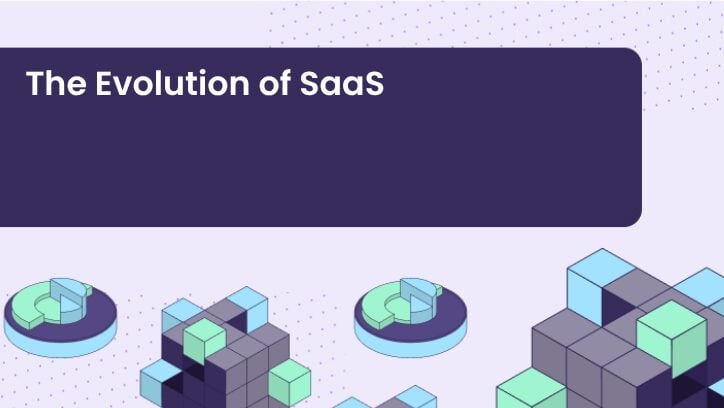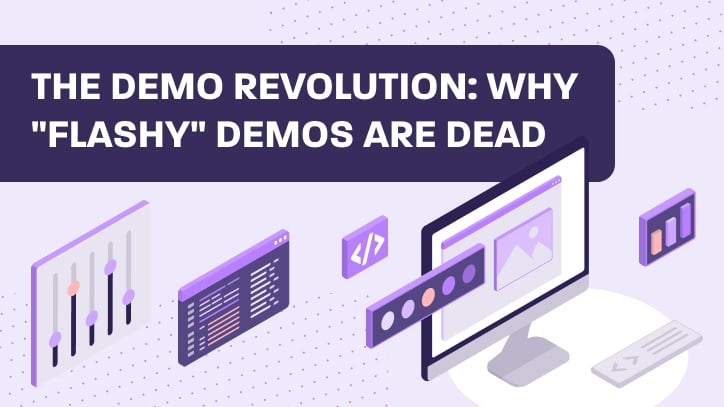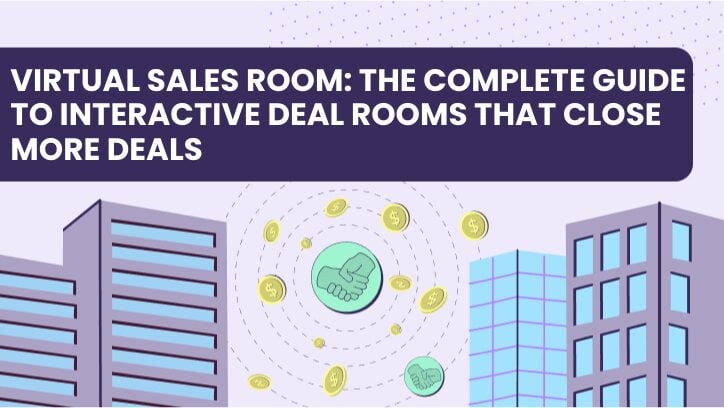The Evolution of SaaS
Software as a Service (Saas) is a groundbreaking shift that revolutionized how we access and use software applications. Before the introduction of SaaS, software was singularly installed and accessed locally, until the 1960s when companies like IBM introduced time-sharing systems.
In this article, I will break down the evolution of SaaS from its early days to the rise of cloud computing and the impact of artificial intelligence (AI). Furthermore, we will comprehensively explore Walnut’s mission of revolutionizing software buying through a data-driven and product-led sales experience.
Let’s get started!
The Evolution of Saas
SaaS can be traced back to the 1960s, when the time-sharing concept was introduced, allowing multiple users to access the same computer system from remote terminals. These terminals are like teletype machines physically placed in different rooms but wired into a single system.
Companies like IBM were the front-runners of this invention. In the 1980s, several companies started using this technology to power mainframes and minicomputers connected to centralized servers. Even though this method was limited to internal networks, it was the technical talk of the moment, setting the pace for SaaS models.
Fast forward to the 1990s, the internet had begun to gain popularity, giving room for more inventions, engineering advancements, and the development of web-based applications, which marked the emergence of SaaS solutions.
Companies like Concur, a travel and expense management company, and NetSuite, an enterprise resource planning (ERP) company, took advantage of this technology to build web-based applications that delivered their services online, laying the groundwork for modern SaaS solutions.
In 1999, Salesforce emerged as the first ever company to offer cloud-based CRM software, changing the narrative of the tech business industry. Instead of the traditional one-time license model, the company introduced a monthly subscription-based approach, marking the beginning of modern SaaS in the business and CRM industry.
The company also played a significant role in expanding the popularity of service-based software, proving that providing software service over the internet could be scalable, accessible, and profitable.
Modern SaaS: Where We Are Today
Software as a Service (SaaS) is no longer the same. The industry now has thousands of companies with a projected capital of $400 billion by 2027–2028. SaaS has evolved into mainstream technology used by businesses of all sizes.
With SaaS, companies are now worry-free of tedious software installation and rigorous operations; SaaS provides instant access to software solutions, making business operations and growth smoother.
Unlike traditional software that requires manual updates and guides to operate and function properly, SaaS provides instant access to solutions with features like:
- Automatic updates
- Seamless scalability
- Remote accessibility
- Easy integration with other tools
- Lower upfront costs
With the state of SaaS today, businesses can enjoy autonomous, seamless integration into their operations or with third-party tools without compromising on security, performance and accessibility.
Unlike older software models that required in-house technical expertise and professional management, the industry has adapted to market demands, offering tailored solutions to every niche and business need.
The Role of Cloud Computing in SaaS
Cloud computing, the backbone of modern SaaS, is a technological system that allows users to access software (SaaS), exchange and store data in real-time, without requiring robust hardware or overloading physical infrastructure.
Furthermore, cloud computing strengthens SaaS security and data recovery capabilities, allowing services to remain accessible during disruptions. In case of system failures, cyberattacks, or unexpected interruptions, critical data can be recovered quickly, ensuring business continuity and minimizing downtime.
In a nutshell, cloud computing is the framework in which SaaS is built. It supports its operation, storage, maintenance, security and other processes that contribute to the smooth running of SaaS
The Role of Cloud Computing in SaaS
Cloud computing is the engine powering the rise and success of Software as a Service (SaaS). By leveraging remote servers to host applications and store data, cloud computing enables SaaS providers to deliver software seamlessly over the internet, limiting the need for businesses to invest in extensive infrastructure or complex installations. This means companies can access powerful tools anytime, anywhere, with automatic updates and real-time collaboration capabilities, making operations smoother and more agile.
Additionally, cloud computing ensures that SaaS applications are scalable, enabling businesses to adjust their usage according to demand without worrying about downtime or maintenance.
In essence, cloud computing has transformed SaaS from a convenient alternative into a critical, accessible, and efficient solution for modern businesses looking to stay competitive in a fast-paced digital landscape.
SaaS Future and Trends
Right from the 1960s till date, the tech industry has experienced significant growth. Saas, being the modern tech in software engineering, has continued to grow and gain momentum over time.
The demand for SaaS across diverse industries shows that the future is extremely bright, particularly with emerging trends and new technologies like generative AI, quantum computing, vertical SaaS, and customer-centric approaches.
Let’s start with Generative AI.
Generative AI and Quantum Computing
Generative AI and quantum computing are foreseen to be the future of SaaS. Generative AI is an artificial intelligence system that equips users to solve complex problems and generate content, including images, text, and lines of code, using prompt engineering.
This SaaS model is revolutionizing every industry, including healthcare, finance, education, e-commerce, manufacturing, etc., by providing automated and cost-effective solutions to bridge workforce gaps and enhance productivity.
With generative AI, early adopters have been able to provide customer support through chatbots, analyze data via prompts, and automate various tasks within their workflows, helping businesses to save time, provide quality services and enhance work productivity.
Even though generative AI models are getting more popular, they require significant processing power, which is where quantum computing comes into play. Quantum computers process data using quantum bits (qubits), with the ability to perform multiple calculations at the same time, fostering complex computations to effectively power Generative AI.
Additionally, Quantum computing helps AI models to function effectively when performing real-time analytics on large datasets, delivering faster and more personalized outputs to users.
Combining generative AI and quantum computing is the future of SaaS. These combinations will provide businesses with smarter automation, accurate and detailed insights, without the heavy infrastructure costs and limitations of the current models. In the near future, SaaS providers will be able to build advanced and intelligent systems that can solve problems, improve service delivery, and keep the industry growing.
The Rise of Vertical SaaS
While typical SaaS businesses provide solutions for several niches, vertical SaaS is focused on offering tailored solutions for specific industries. The system is designed to provide solutions to targeted-niche workflows, compliance requirements, and customer pain points in sectors like healthcare, real estate, education, finance, and manufacturing.
For instance, vertical SaaS in healthcare may be targeted to solve electronic medical records and HIPAA compliance, while its solution for the real estate industry may focus on providing property management and leasing/rent automation systems.
The custom approach of vertical SaaS gives businesses the freedom to opt for software that aligns closely with their needs rather than getting a generic application that provides a little or generic solution. Aside from offering custom solutions, vertical SaaS drives higher efficiency, better data insights, and improved operational experiences.
As businesses continue to see the need for targeted solution software, the need for vertical SaaS continues to be on the rise. The gain in momentum has become a force to reckon with, helping niche businesses to scale effectively while maintaining industry relevance and compliance.
Customer Centricity
Customer centricity is a business approach that provides solutions with the sole aim of meeting customers’ needs and enhancing their journey. This business model requires understanding customer preferences, behaviors, and expectations to create in-demand products, to drive satisfaction and customer loyalty.
In SaaS, it involves building a product that fascinates customers, such as interactive interfaces, personalized experiences, and responsive support to meet every customer’s needs. Customer centricity does not stop at the launch stage; user data and feedback are collected and analyzed to provide continuous support and user-oriented updates.
With modern SaaS, companies continue to leverage analytics and AI technology to analyze user behavior and expectations, building a product tailored to meet these needs through simplified onboarding, improved customer retention, and driving product and organizational growth.
At Walnut, customer centricity is more than a principle; it is the benchmark of our system and the primary focus of our business; revolutionizing how businesses buy software. We believe users should be able to decide if a product works for them even before making a purchase, making features, benefits and mechanisms transparent, seamless and user-oriented just like any good software out there. ‘
With data-driven and product-led sales experience, our SaaS solution enables businesses to explore, test, and understand whether a product truly aligns with their needs before making a purchase.
At Walnut, we were founded to bridge the gap left by traditional demos and sales pitches – allowing prospects to experience the software firsthand and gain clarity and confidence in their buying decisions.
Simultaneously, our products also enable sales teams to focus on closing deals by providing sophisticated tools that allow them to showcase their products and services to potential customers even before launch.
By offering interactive, personalized product experiences, sales teams can clearly demonstrate value, helping prospects understand how the solution addresses their needs while streamlining the sales process.
If you are ready to transform how you buy and sell software while staying ahead in the evolving SaaS landscape, start your journey with Walnut today. Get Started with Walnut





